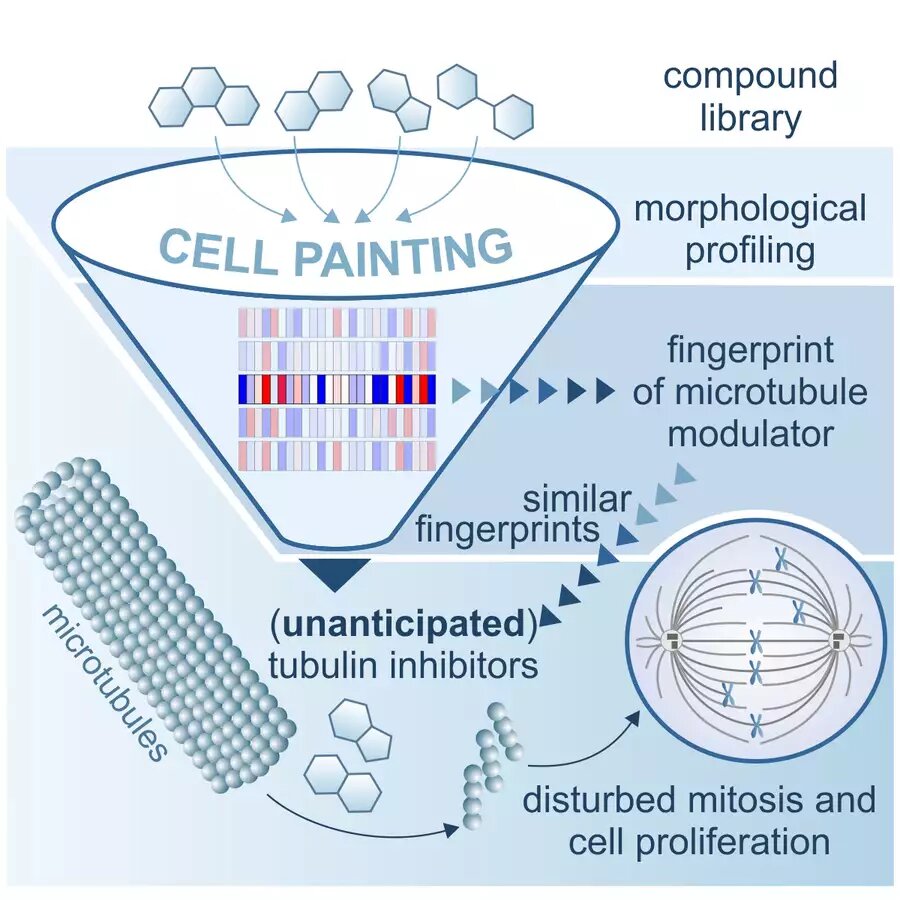

When a promising substance is found in the early stages of drug discovery, pharmaceutical researchers say it's a hit. Unfortunately, hits are often showing undesirable side effects that not only complicate the search for new hits, but also the subsequent development into a drug. A new study by Slava Ziegler and Herbert Waldmann from the Max Planck Institute of Molecular Physiology could help to identify one of the most frequently observed side effects of early drug discovery.
The most commonly used cancer drugs have active substances that bind to microtubules. This can lead to cell death and disrupt other essential processes. The effect is not desirable for other therapies. Microtubules have many deep binding pockets on their surface that make them vulnerable to modulation by a wide variety of chemical substances.
Drug discovery is biased.
The study of known side effects plays a crucial role in the search for and development of new active substances, especially when one considers that more than one billion US dollars are needed to develop a new drug. Although there are already standardized test procedures for identifying undesirable side effects, they do not cover all targets in cells, often do not reflect the cellular context, and they allow targets to be overlooked. Drug discovery is always biased.
The cells are being painted in.
A team led by Slava Ziegler and Herbert Waldmann used a new strategy to reliably detect side effects, such as the disruption of microtubules, at an early stage of the search for bioactive compounds. The researchers used a cell painting approach to do this. Here, several functional areas of the cell are stained and examined for changes after the addition of chemical substances. This allows for recording hundreds of cellular parameters in a single fingerprint. The effect of the unknown substance can be deduced if one can detect similarity to those of known reference substances. This approach has the potential to create fingerprints for thousands of substances in a high-throughput process. More than 1% of the substances studied had a tubulin-modulating effect. A large number of known reference substances for which an influence on tubulin was previously unknown were also included.
Useful add-on for drug development.
Reference substances play an essential role in the interpretation of a screen, so they should be carefully evaluated and tested. The compounds identified by the cell painting show a wide variety of chemical scaffolds and even small chemical modifications can have a dramatic impact on the tubulin-binding properties of a compound. During the compound maximization phase, where existing atoms are exchanged or removed, the risk is ubiquitous. Slava Ziegler says that additional profiling during the search for hits could help identify desired and new bioactivities.
More information: Mohammad Akbarzadeh et al, Morphological profiling by means of the Cell Painting assay enables identification of tubulin-targeting compounds, Cell Chemical Biology (2021). DOI: 10.1016/j.chembiol.2021.12.009 Journal information: Cell Chemical Biology Citation: Morphological fingerprinting could help identify side effects and new bioactive compounds in drug discovery (2022, January 27) retrieved 27 January 2022 from https://phys.org/news/2022-01-morphological-fingerprinting-side-effects-bioactive.html This document is subject to copyright. Apart from any fair dealing for the purpose of private study or research, no part may be reproduced without the written permission. The content is provided for information purposes only.